|
Freedom Caravan for Soviet
Jews
At the beginning of 1971 we laid plans for a challenging education
project: an outreach to bring the story of Soviet Jewry to thousands
of young people attending Jewish summer camps. The region we hoped
to cover in the U. S. extended from the Northeast states through
Wisconsin; and in Canada took in the province of Ontario. In an
introductory letter to the camp directors I promised that our
Freedom Caravan on Soviet Jewry would bring to each camp, “through
song, story and drama, an account of Jewish life in the Soviet Union
and through workshop and discussion, ideas and stimulation for
action.” [See
letter to camp directors (pdf)]
|
For the Caravan’s roving crew, I recruited four
college students with Jewish camp experience, musical skills and a
track record of Soviet Jewry activity. The team leader was David
Forman, a gung-ho, uninhibited, fifth year rabbinic student at
Cincinnati Hebrew Union College; then there was David’s wife, Judy,
an education major at the University of Cincinnati; and two
University of Toronto students, David Sadowski and Mark Clarfield.
Lastly, my wife, Evy, operating from home, managed the schedule of
the Caravan’s camp visits throughout the summer. |
|
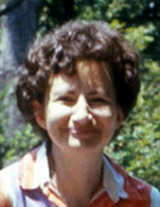
Evy Rosenblum |
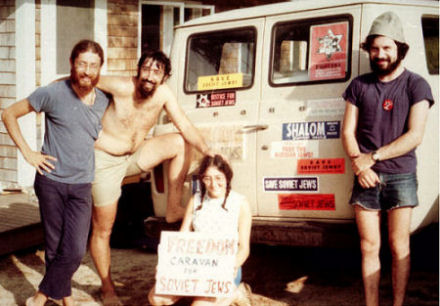
l - r: David Sadowski, David and Judy Forman, Mark Clarfield
|
At the end of May, the
team members descended on our home for a tumultuous two
weeks of brainstorming, practice and preparation. For
our four kids it was a ball. They adored having this
boisterous bunch in residence. On the last morning, the
team loaded up their rental van and, with the Rosenblum
family waving them off, headed for the Buffalo, New
York, border crossing and their first assignment at a
Canadian summer camp. However, it was not the last of
the crew I would see that day. About noon there was a
distress call from David Forman, “please come, you gotta
vouch for us: the Canadian border guys won’t let us in!”
Yep, this was the era of the hippy movement. For
officials it was the barbarians are at the gates: curb
entry of scruffy, sandal-wearing bearded young men and
be-jeaned, bra-less young women (And who knows? They may
be LSD-scarfing, pot-smoking, political radicals to
boot). Three hours and 200 miles later, credentials in
my suit pocket and wearing an unaccustomed tie, I drove
to the border station; attested to the earnest nature of
the Caravan’s mission; and tarried long enough to
witnessed their release into Canada.
The rest is history. From June
through August the Caravan wended its way to 40 Jewish youth camps —
engaging, enlightening and enthusing 9000 campers and staff people.
|
|
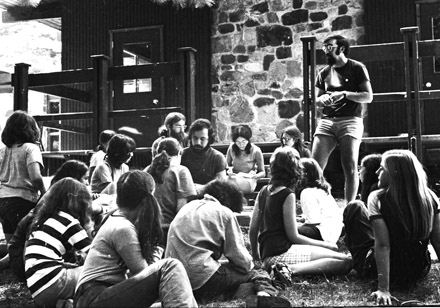
David discusses with campers what life is
like for Jews in the Soviet Union.
|
|
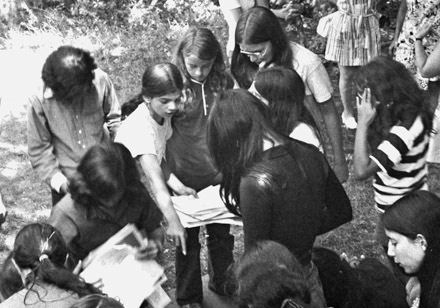
Working on petitions to Soviet officials
|
|
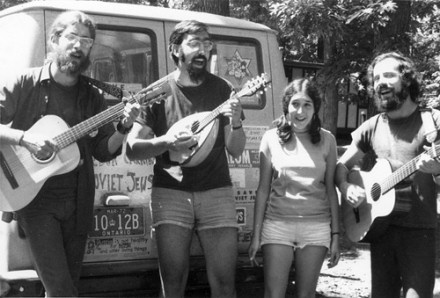
Songs for heart and head |
Letters from camp directors lauded the Caravan’s
efforts. To top it all, some wrote of personal plans to initiate
projects for Soviet Jews back in their home communities. See sample
of letters:
Letter
1 (pdf);
Letter
2 (pdf).
Following that long summer, what became of Caravan’s crew?
David Forman, three months
later, organized the Cincinnati Council for Soviet Jews; was
ordained rabbi in 1972 and Judy and he, soon after, made aliyah. For
most of his career, David’s bread and butter job was Director of the
National Federation of Temple Youth Jerusalem Office. On the side,
he was a major advocate for human rights in Israel: founder and
Chair of the Jerusalem Council for Soviet Jews, 1973; Chair of
Interns for Peace, 1984-1986; founder and Chair of
Rabbis for Human
Rights, 1988-1992 and 2002-2003. Between 1977 and 1991, he was a
Deputy Commanding Officer in the Artillery Corps of the Israeli
Army, receiving a Citation for Meritorious Service in 1990.
David Forman died on Monday May 3,
2010, age 65.
He was a great human being and a life long friend of
my whole family. For more,
read this
Haaretz story (pdf). LR
|
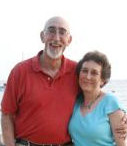 |
|
Judy Forman had a long fruitful career
teaching two generations of young children and children
with developmental disabilities — to say nothing of
raising their four girls and managing the Forman
household and, more recently, grandmothering their seven
grandchildren.
< David and Judy, 2008
|
|
Mark Clarfield went on to medical school
at McGill University, Montreal, specialized in several
disciplines and ended in geriatrics. He married Ora
Paltiel in 1975, had three children, and moved to Israel
in 1992. Now, Mark is Head of Geriatrics at Soroka
Hospital, Beersheva and Professor of Geriatrics at
Ben-Gurion University. Ora is a hematologist at Hadassah
Hospital. In a recent email, Mark comments “with respect
to our work on behalf of Soviet Jewry, I have only fond
memories and a sense of pride. Ironically, many of my
colleagues here are from the ex-USSR (as are 50 percent
of my patients). I don't know what the Israeli medical
system would have done without the influx of these
physicians.” |
|
 |
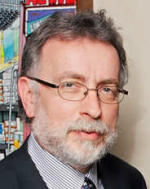 |
|
David Sadowski
still lives in Toronto.
He has established a solid reputation as
an accomplished developer of governmental, institutional
and commercial properties. In the just last decade, he
has been responsible for two major projects. First, he
managed the conversion of a 640-acre, former Toronto
military base into Canada’s first urban park, Parc
Downsview Park, intended to be a place where Canadians
can celebrate their country’s history and physical and
human diversity. |
|
Lately, David has
overseen for the UJA Federation of Toronto development
of the 50-acre Lebovic Jewish Campus, which includes
schools, community agencies, recreation facilities, and
open green spaces. |
next > Project
Sefer |







